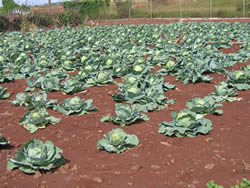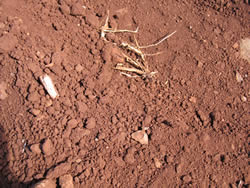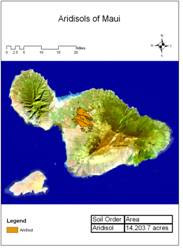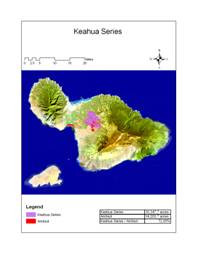Arid Soils (Aridisol)
Typical Characteristics
- Distribution: Arid soils are one of the most prevalent soil orders of the world.
- Climate: Arid soils are most characterized by their water deficiencies. Most arid soils contain sufficient amounts of water to support plant growth for no more than 90 consecutive days.
- Mineralogy: Arid soils typically contain high levels of calcium carbonates, gypsum, as well as sodium.
- During soil formation, soluble salts at translocated to a subsurface horizon. However, since there is insufficient rainfall to leach salts from the soil profile, soluble salts accumulate.
- Aridisols often have a surface horizon that is pale in color and low in organic matter.
- Fertility: Due to limited moisture and accumulated soluble salts, these soils are generally not suited for major crop production. However, if properly managed and irrigated, these soil may become productive. There are notable soils in Maui that are classified as arid soils, but are notable for their unique fertility.
Arid Soils of Maui
Water saturated, salty arid soils (Aquisalid)
Minimal typical arid soil (Haplocambid)
Unique Characteristics of Arid Soils of Maui County:
Of the two types of arid soils on Maui, the agriculturally significant soil is the Keahua Series.
- Location: The Keahua Series is lies within the central isthmus of Maui in the uplands, at elevations ranging from 600 to 1,500 ft. It extends 13,000 acres.
- Texture: Silty clay loam
- Temperature and Rainfall: Its average annual temperature is 73 degrees F, and the average annual rainfall is between 15 to 25 inches.
- Slope: Gentle to moderate
- Parent material: Keahua Series formed from basic igneous rock with some volcanic ash.
- Depth: Surface layer is generally 10 inches. Subsoil extends 50 inches in depth.
- Physical Traits: The soil is well drained and characterized by medium runoff and moderate permeability.
- Color of Surface Horizon: Dark reddish brown
- Fertility: If irrigated, Keahua soils contain plant nutrients and are highly suitable for crop production.
- Acidity: Slightly acidic
- Natural Vegetation: Grasses, ilima, kiawe, and lantana
- Crops: Sugarcane, pineapple, pasture
As demonstrated in the following data table, although the Keahua Series is high in base cations, its organic carbon levels are not high enough to meet the criteria of a Mollisol, or highly fertile grassland soils.
Depth (cm) |
Ca |
Mg |
Na |
K |
Org. C |
Sum Cations |
Base Sat |
pH water |
0-31 |
15.5 |
5.4 |
0.9 |
1.2 |
3.98* |
52.4 |
44 |
6.1 |
31-46 |
11.2 |
5.2 |
0.9 |
0.3 |
2.05 |
41.4 |
43 |
6.6 |
46-58 |
4.6 |
3.5 |
0.8 |
0.1 |
1.01 |
27.3 |
33 |
6.1 |
58-88 |
2.6 |
2.7 |
1.0 |
0.1 |
0.87 |
25.6 |
25 |
5.6 |
88-160 |
1.1 |
2.6 |
1.5 |
0.1 |
0.91 |
32.0 |
17 |
5.8 |
*Organic carbon not high enough to meet criteria of Mollisol.
 
Photo by Tai McClellan
|




